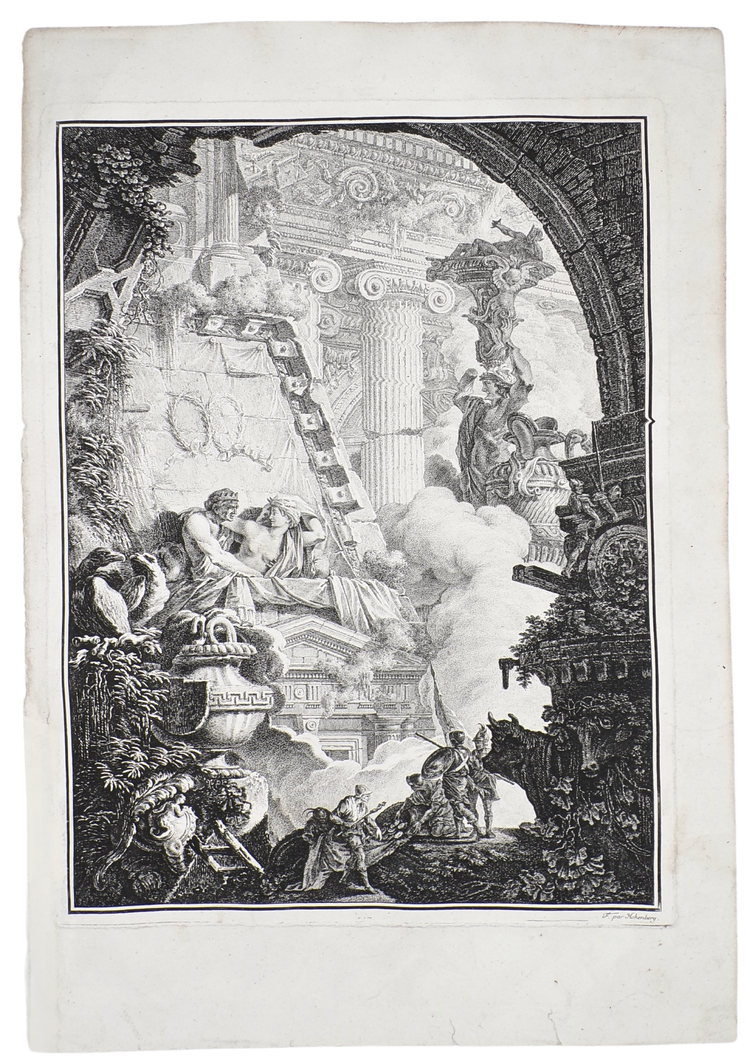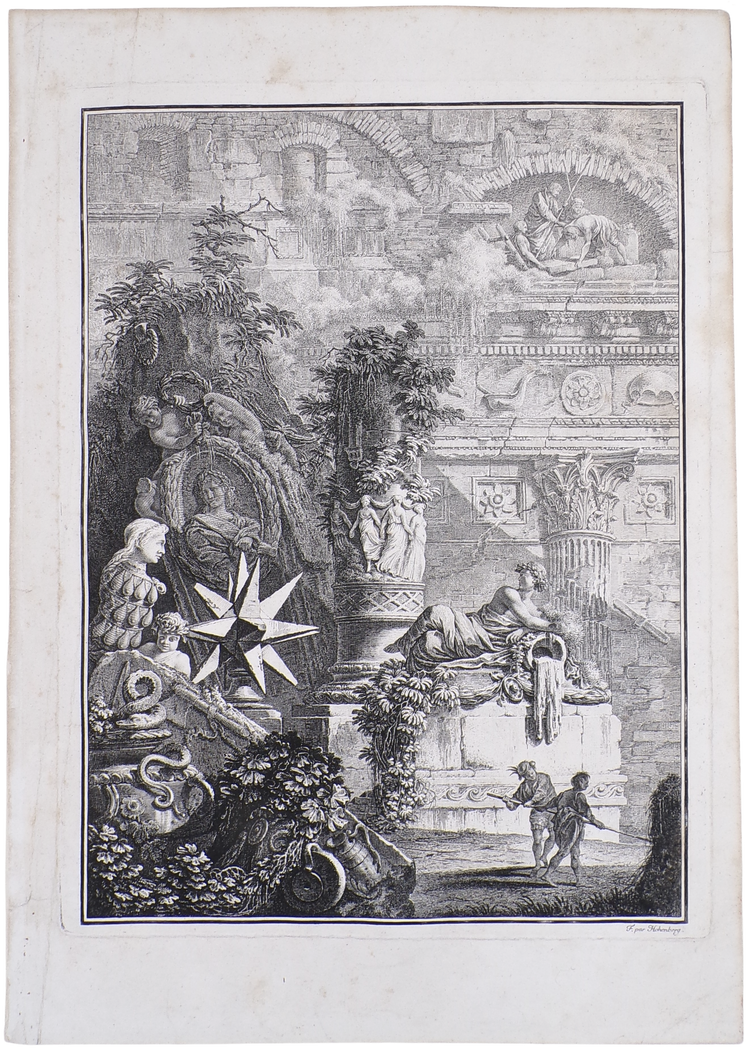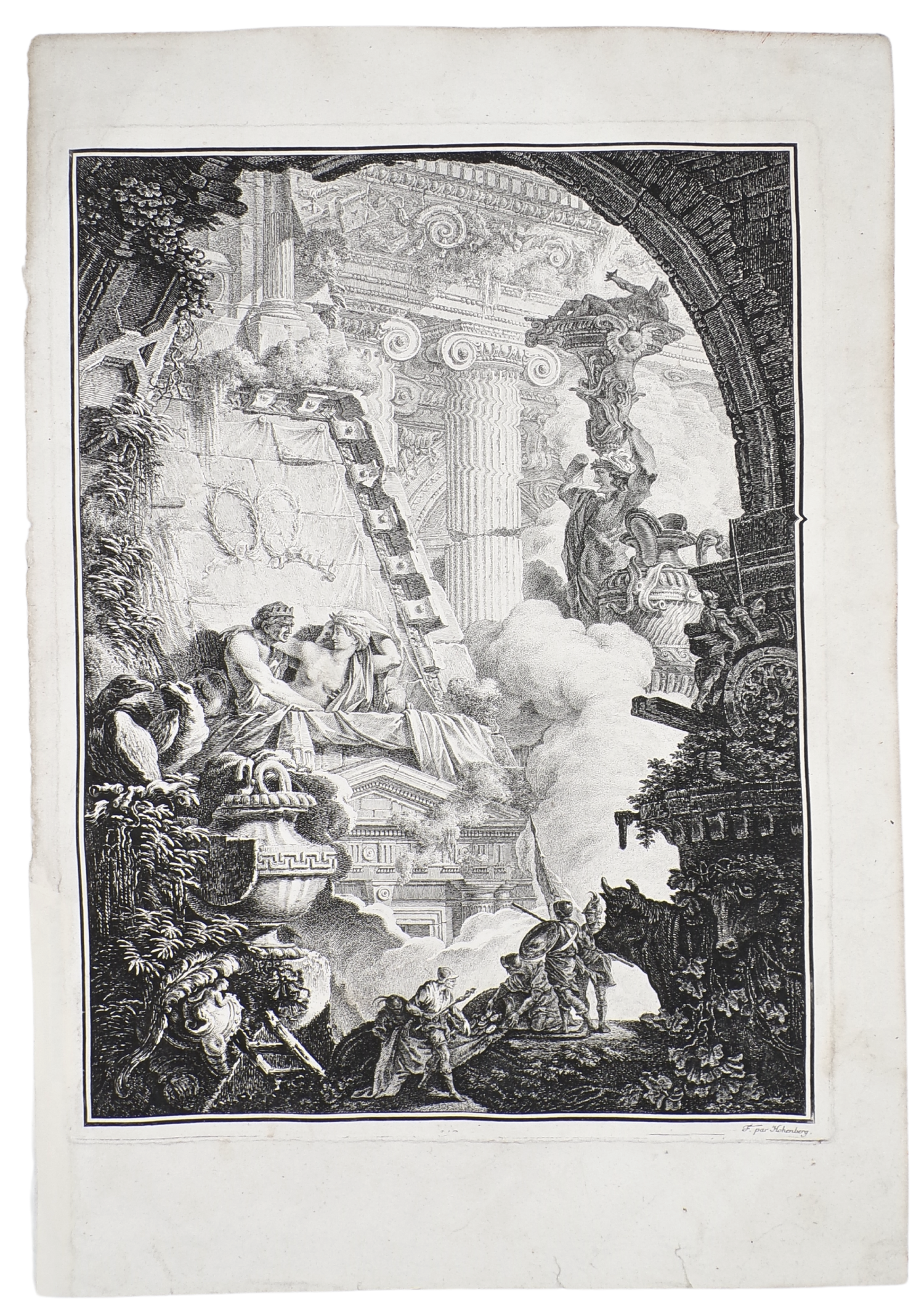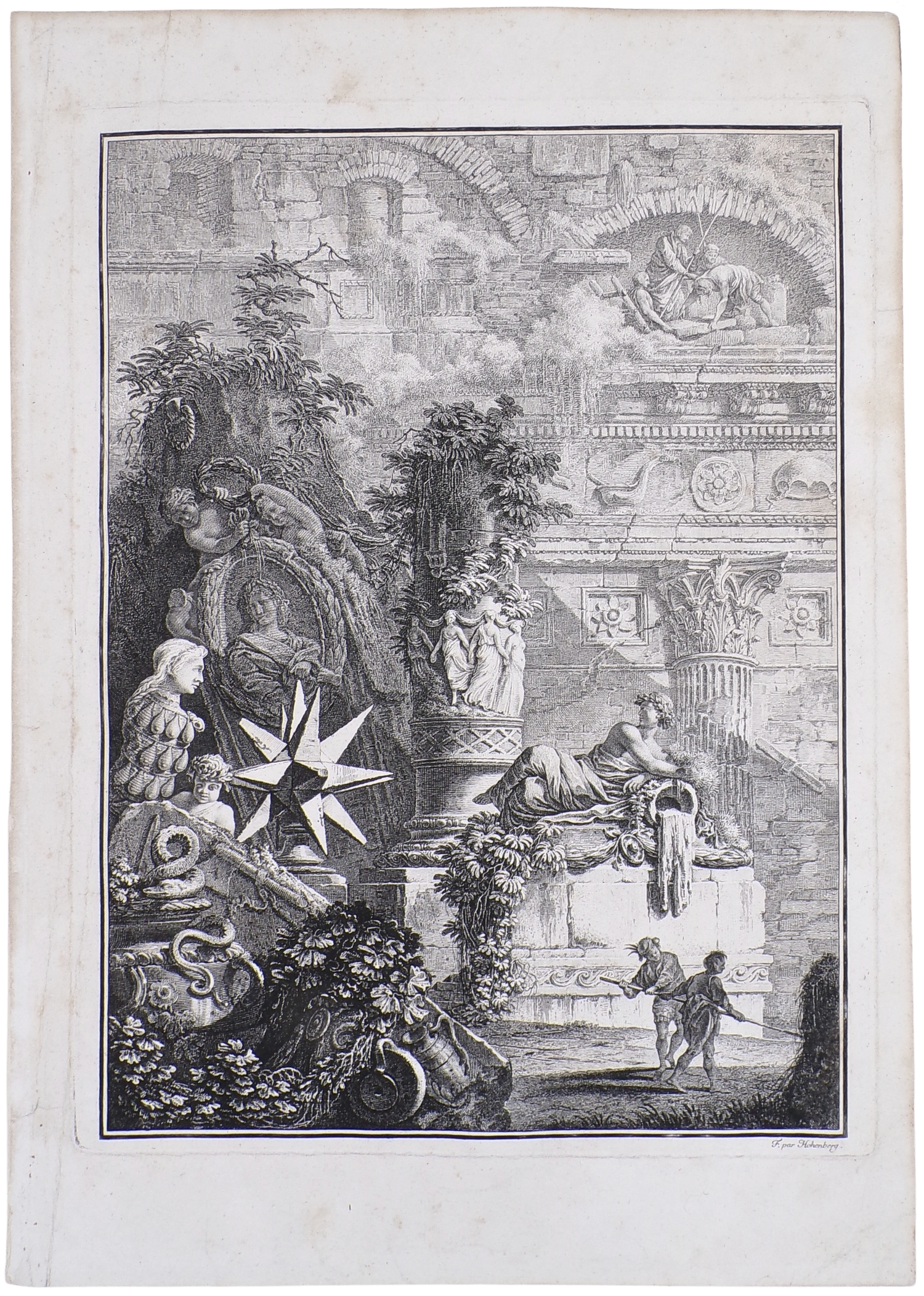An extraordinarily rare pair—two of only three known etchings by Hetzendorf von Hohenberg
- Regular price
- €12.500,00 EUR
- Regular price
-
- Sale price
- €12.500,00 EUR
- Unit price
- per
Johann Ferdinand Hetzendorf von Hohenberg (1733-1816).
Les Ruines d'un mausolée. [and] Décombres de bâtiments antiques. [Pair of architectural fantasies, proofs before the letters.]
Vienna?, circa 1770.
Etching on laid paper, ca. 36 x 27 cm. (platemark), 44,5 x 31 cm. (sheet).
Excellent impressions with wide margins of the proofs before letters for an extremely rare pair of etched architectural fantasies by Austrian architect Johann Ferdinand Hetzendorf von Hohenberg. These are two of only three known etchings by Hetzendorf himself, grouped in his monograph by Erwin Hainisch under the title Drei Phantasien über antike Ruinen. The two architectural fantasies presented here were conceived as a pair, while the third, in oblong format, stands alone within the trio. The third etching appeared on the market several years ago (Teeuwisse) and was described as “extremely rare.” Indeed, the pair we present here does not appear to be held in major collections such as the Albertina, the Akademie der bildenden Künste Wien, the Metropolitan Museum of Art, or the Rijksmuseum. Apart from the three prints by Hetzendorf himself, some prints after Hetzendorf’s designs were executed by Carl Schülz.
The final states of both prints, with their inscriptions, were reproduced in the monograph but unfortunately without details regarding their whereabouts, and we have not yet traced them. These final states include their titles and Hetzendorf’s dedications to the chief Vienna court architect, Baron von Paccassi. According to Hainisch, "the works were created purely as fantasies, without any specific literary foundation." When Wilhelm Beyer published all three plates in his Neue Muse in 1784, he referred to them as "determinative pieces" and recommended them as models: for painters, to adorn the wall at the end of an alley or depict ruined temples; for sculptors, as inspiration for fragmented works. However, it is also noted that the artist created these compositions without a specific purpose in mind.
Les Ruines d'un mausolée shows a troop of soldiers entering the ruins of a burial site. Some are still searching for loot, while others are already gathering treasures onto a spread-out cloth. Yet, they are no longer entirely focused on their plundering. One of them has fallen under the spell of the massive statue of Pluto and Proserpina at the tomb’s front wall. Though made of stone, the figures seem so full of life that an eerie dread grips the intruders. In the foreground, the remains of an Ionic colonnade rise in majestic calm above the bustling scene. Emerging from the mist in front of it is a statue that ends in a candelabrum—here, a demon has settled to rest, stretching his arm dreamily toward the surviving remnants of antiquity.
The other print, Décombres de bâtiments antiques, serves as a contrasting counterpart, particularly in the distinct difference in atmosphere. A contemplative, idyllic mood stands in opposition to an ominous sultriness. Yet even here, although the people working within the ruins seem unaware, the demonic forces emanating from the lifelike ancient sculptures can be felt. The stone fountain nymph suddenly turns toward the statue of an Ephesian Artemis, whose gaze appears to respond to hers. The nymph also closely observes a statue of a boy, seemingly watching the snake basking on the edge of a vase.
Hetzendorf von Hohenberg was evidently heavily influenced by Piranesi and would later become the most prominent Austrian architect of his time, known for his additions to Schönbrunn and the fantastical Franzenburg.
Condition: minor sporadic toning in both sheets, otherwise in very good condition. Les Ruines d'un mausolée is slightly creased in margin; Décombres de bâtiments antiques has a minor repair in the image and one margin reinforced.
Literature:
Erwin Hainisch, “Der Architekt Johann Ferdinand Hetzendorf von Hohenberg”, in: Wiener Jahrbuch für Kunstgeschichte, 1949, pp.19–90, plate VIII, 1 & 2.
Couldn't load pickup availability
Share


Contact
Email: hugo@artemrarebooks.com
Phone: +31651042297
Visit us on appointment at:
Former US Embassy
Lange Voorhout 102
2514EJ
The Hague (The Netherlands)
Shipping address:
Nannie van Wehlstraat 51
2548MN
The Hague
The Netherlands


